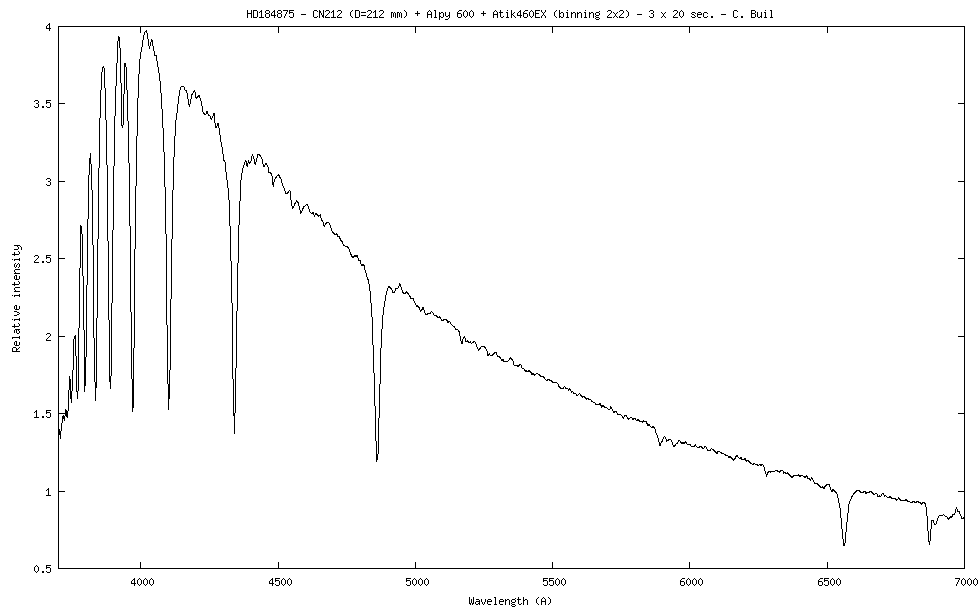Time resolution capacity of Alpy 600 spectrograph on a small telescope
Christian Buil - Castanet-Tolosan Observatory
For a presentation of 2013 RR Lyrae photometric and spectrometric
campaign, see:
http://rr-lyr.ast.obs-mip.fr/dokuwiki/doku.php?id=rrlyr2013
See also 2012 Wiki page: http://rr-lyr.ast.obs-mip.fr/dokuwiki/doku.php?id=rrlyr2012
and my personal 2012 spectrographic observations report: http://www.astrosurf.com/buil/rrlyr2/rrlyr_campaign.htm
Setup used for the present evaluation
Telescope : Takahashi CN212 used at the direct f/4 newton focal
plane (212 mm aperture)
Spectrograph : Alpy 600 (+ guiding
module + calibration module) - see
hee for more details
CCD camera : Atik 460EX model
Observatory : Castanet-Tolosan near Toulouse town, suburban conditions
Comparison of a sequence
of three RR Lyr spectra taken with a time resolution of 2 x 150
seconds. The camera is used in 2x2 bining mode
(9.08 microns
equivalent pixel size)

Detail of blue and UV spectral region.

Comparison of a sequence
of 8 RR Lyr spectra taken with a time resolution of 300 seconds.
The camera is used in 1x1 binning mode
(4,54 microns pixel
size)

Detail of blue and UV spectral region.

Comparison of bin
2x2 and bin 1x1 spectra of star HD184875 (type A2V, reference star
recommended for spectrographic campaign)
Note the better resolved
UV region in bin 1x1 mode.


Conclusion:
The spectra obtained in 1x1 binning are noisier than in 2x2 binning, but the difference is quite small. The measured SNR in 1x1 binning mode
is 175. It is 200
in 2x2 binning mode. All for a 300 seconds
equivalent exposure.
The sampling noise is stronger in 2x2 binning, which can cause false alarms.
With Alpy 600
specrograph , I recommend for
this campaign to use the camera in binning 1x1 mode
(4.54 micron pixel for
an Atik460EX camera,
6.45 microns
pixels for an Atik314L +
camera, for example).
Note that the spectrograph Alpy 600 can observe in the ultraviolet at least
to 375 nm, while the exposure time is relatively short (300 s), the
star is faint (V = 7.5) and the telescope
diameter is very modest
(D = 200 mm).